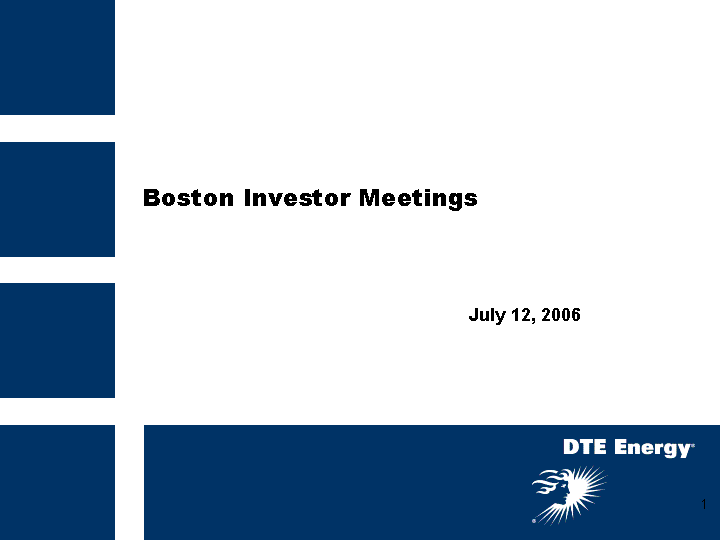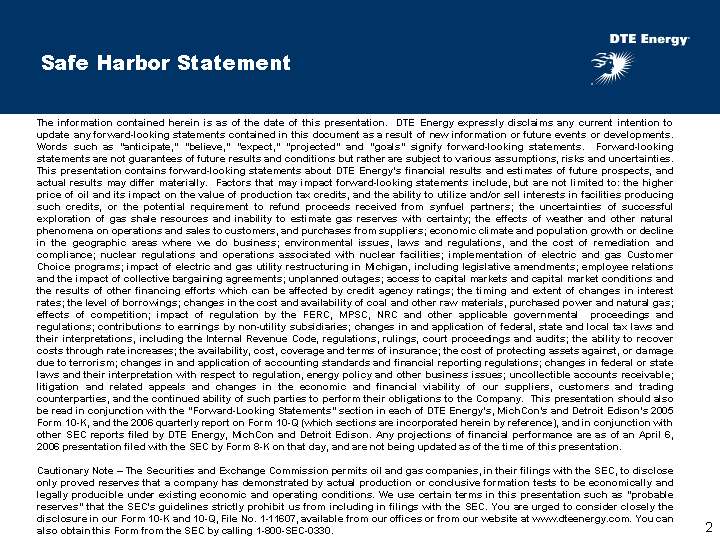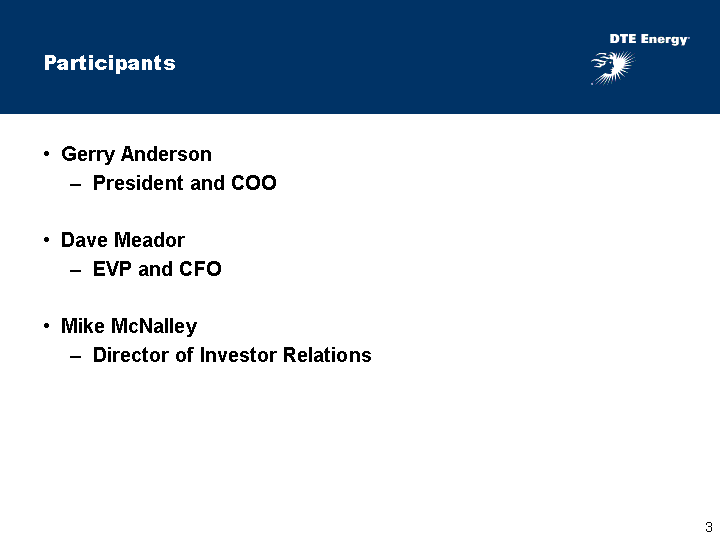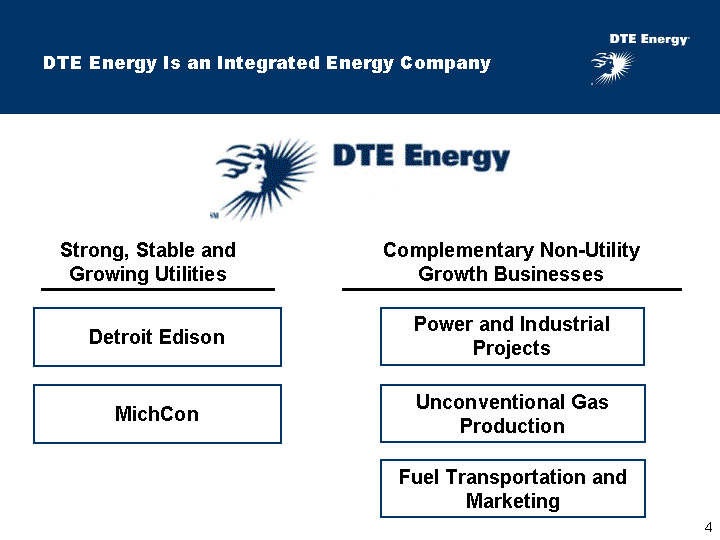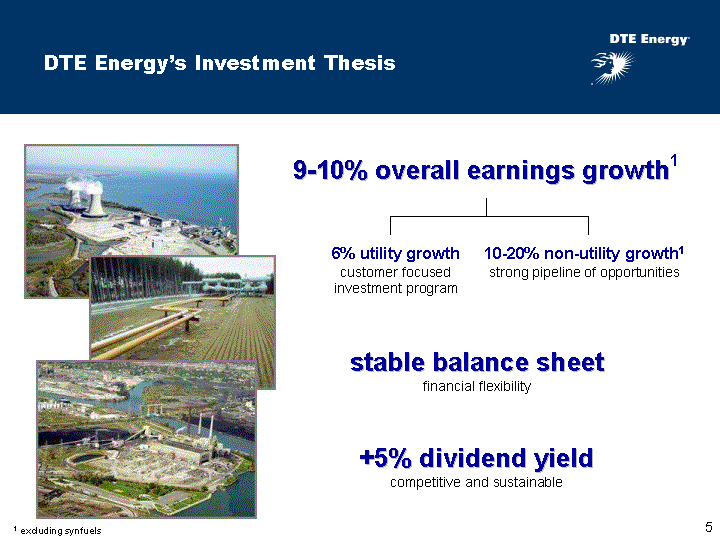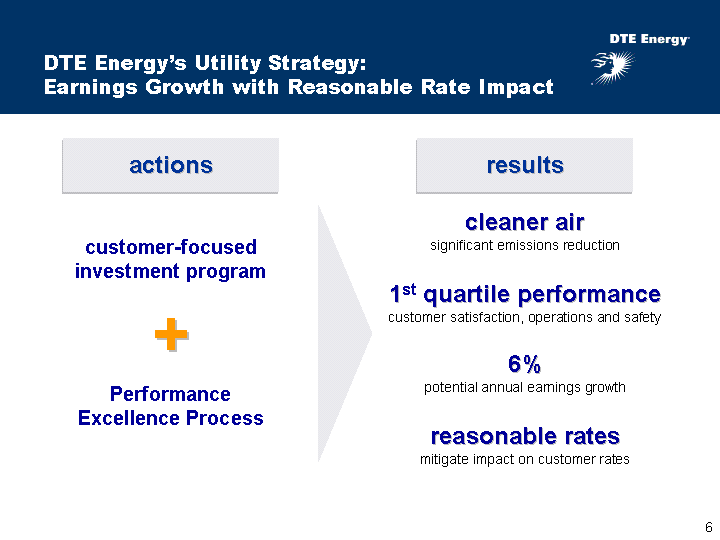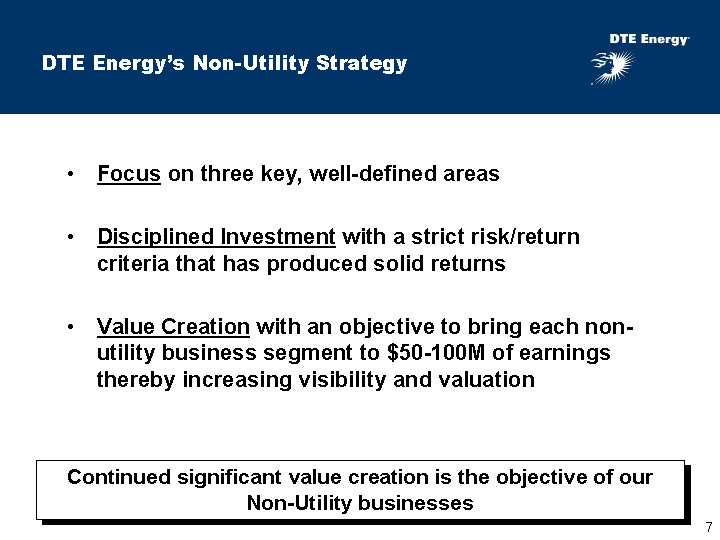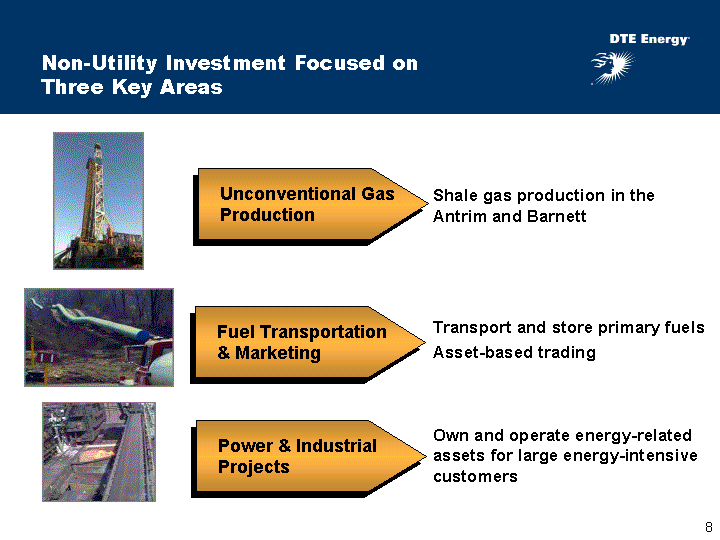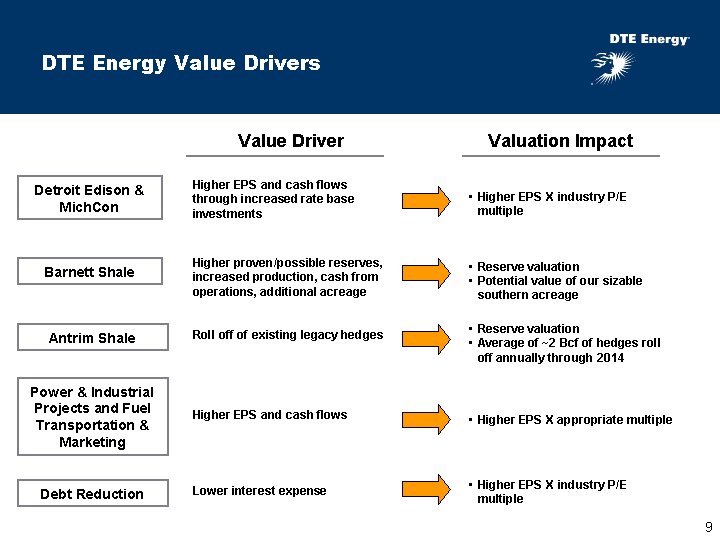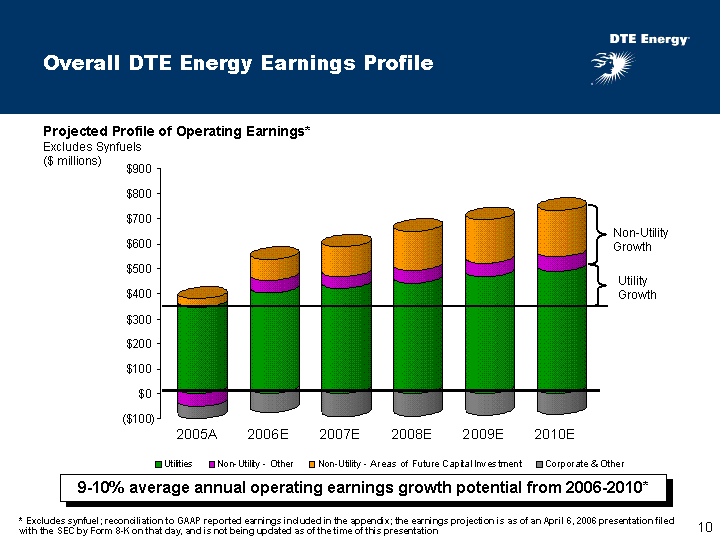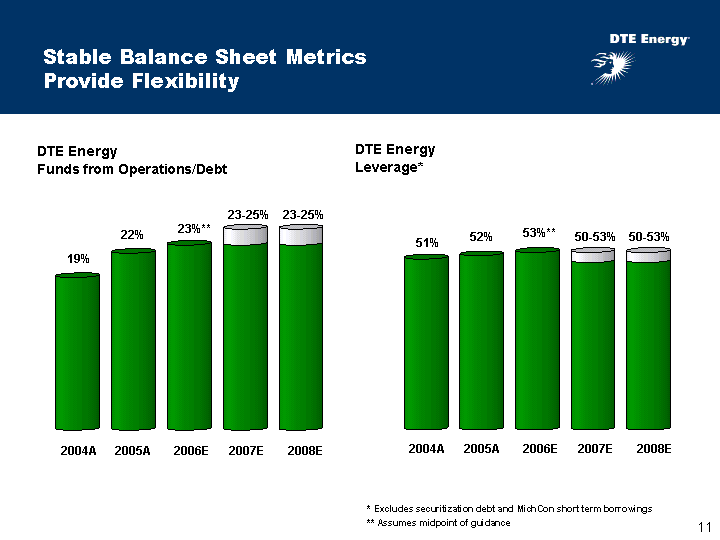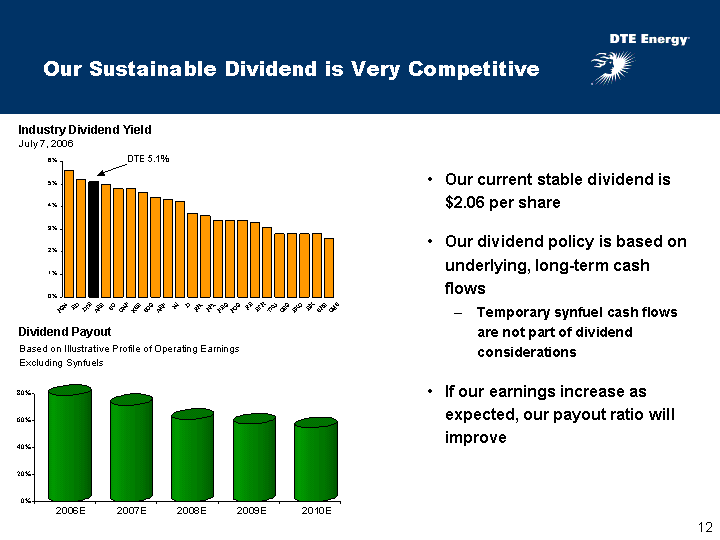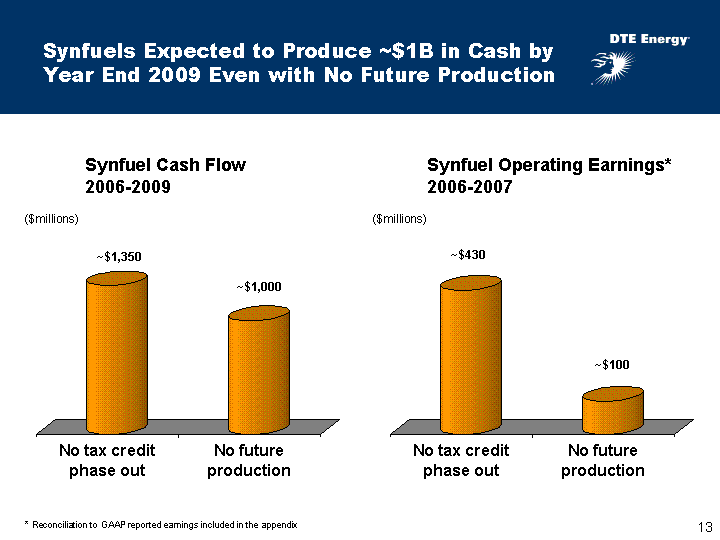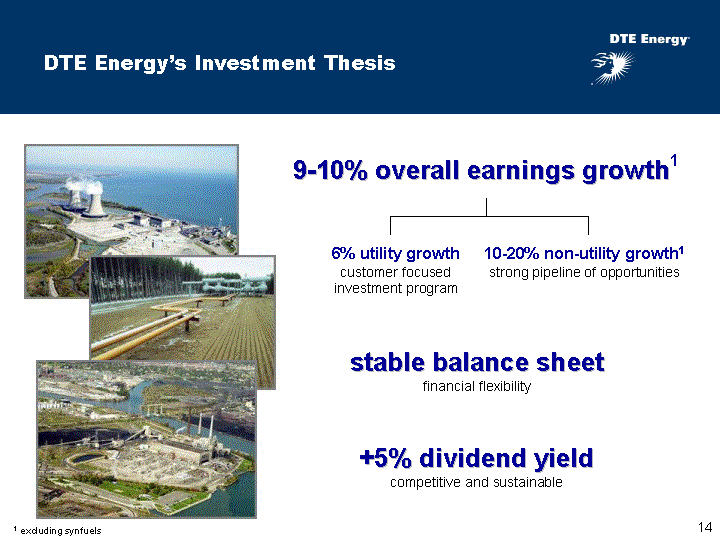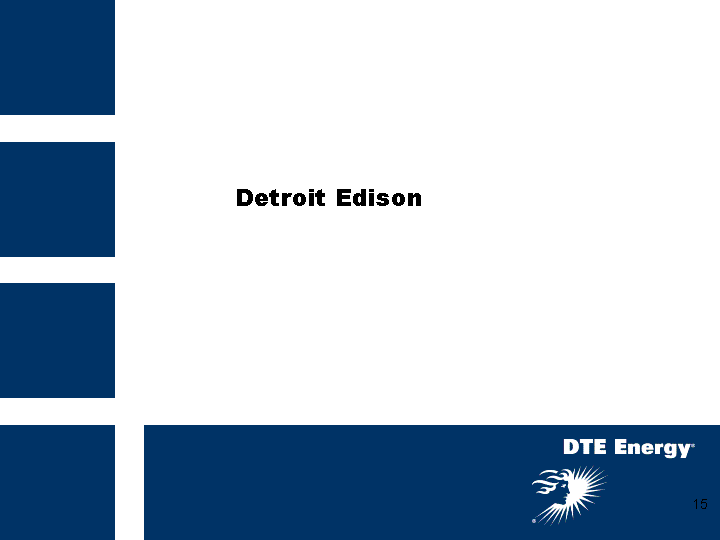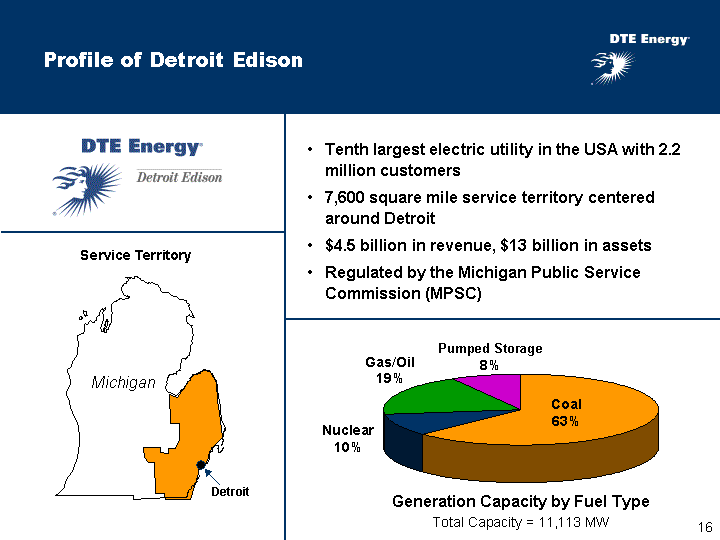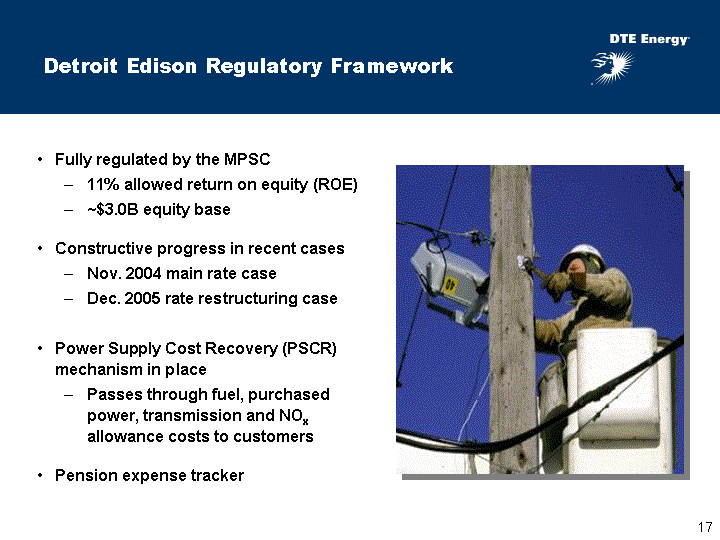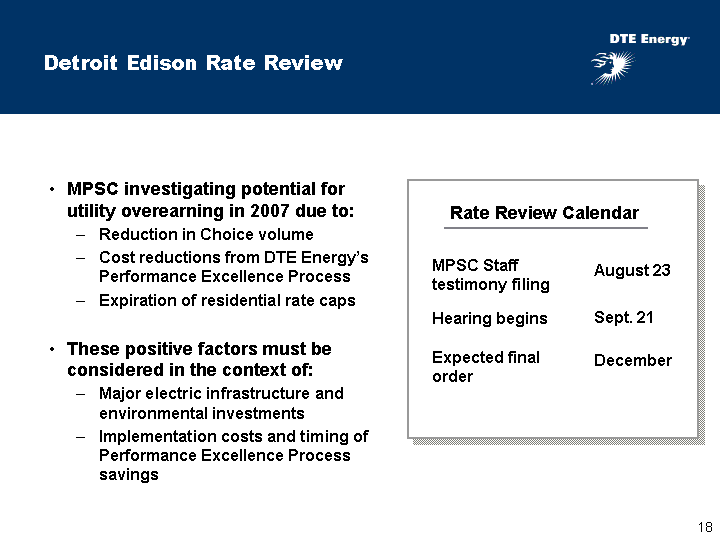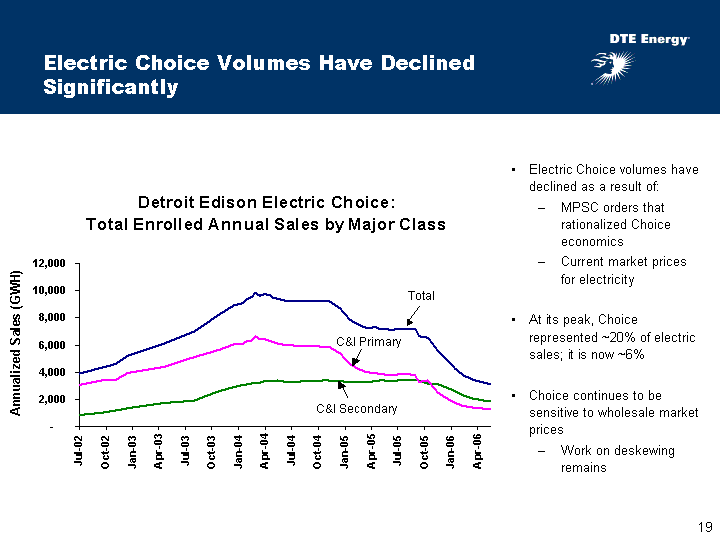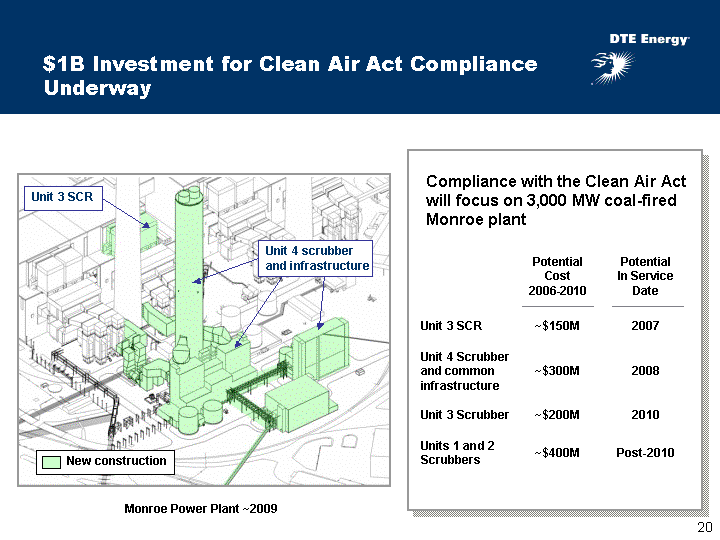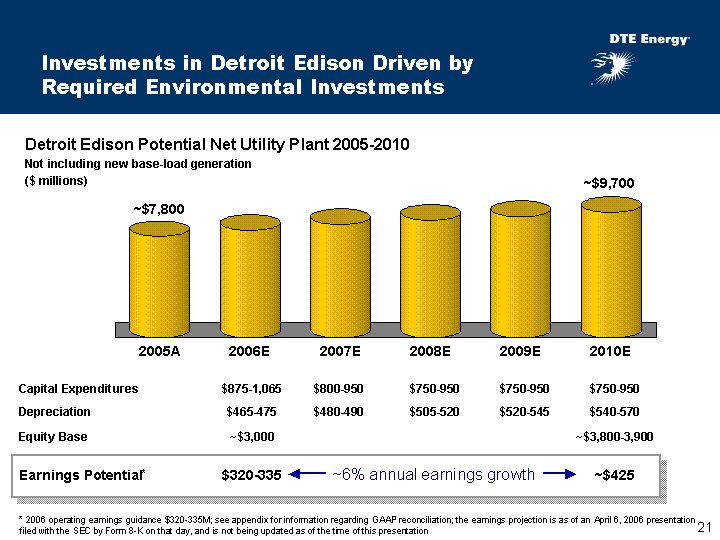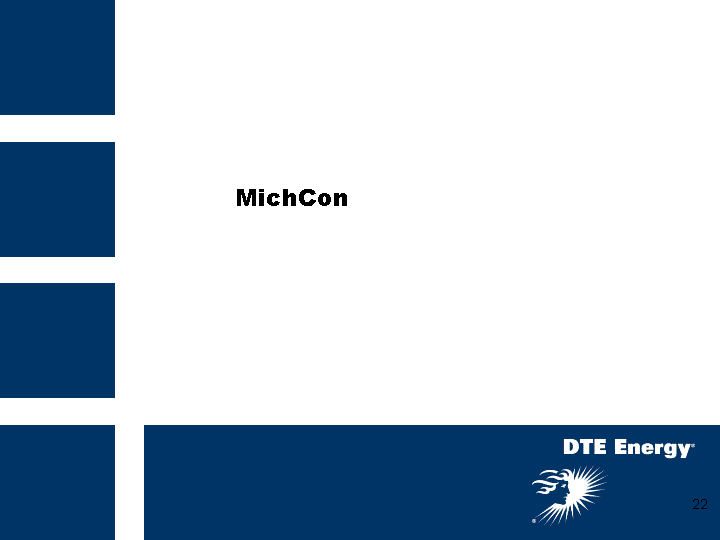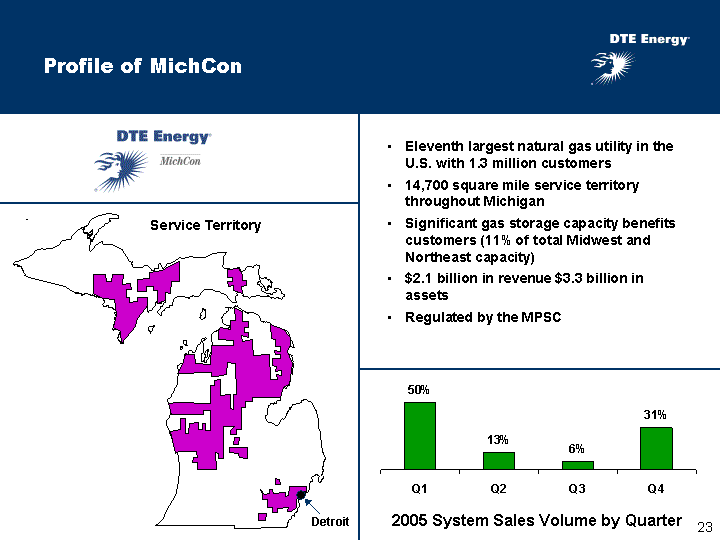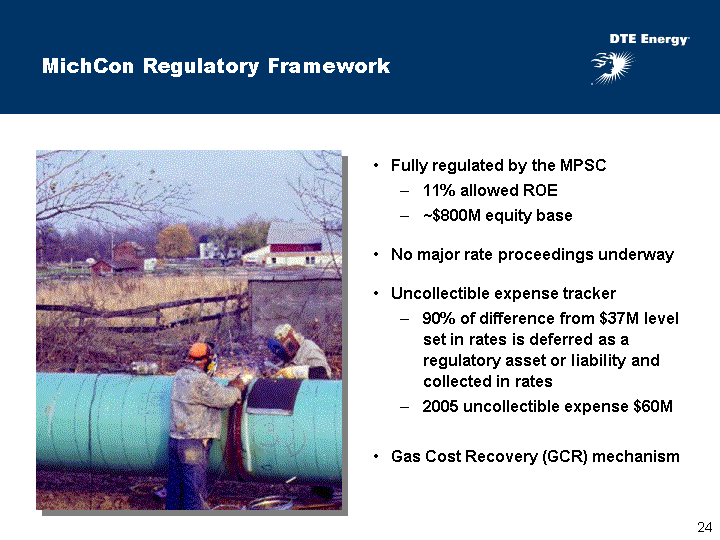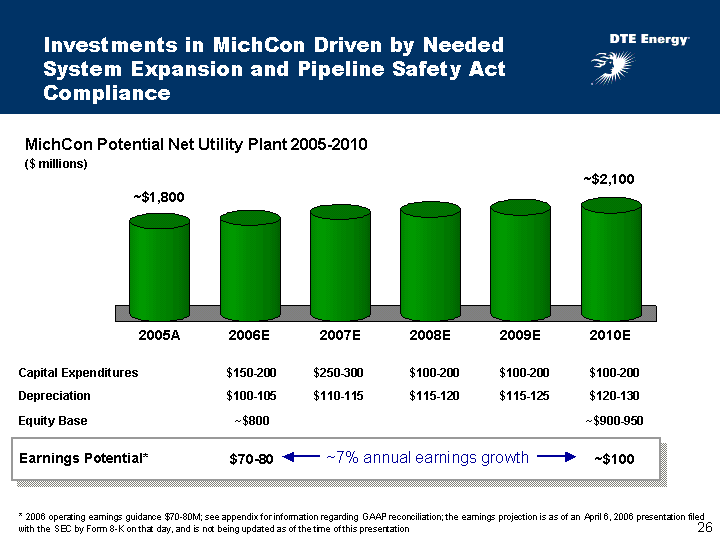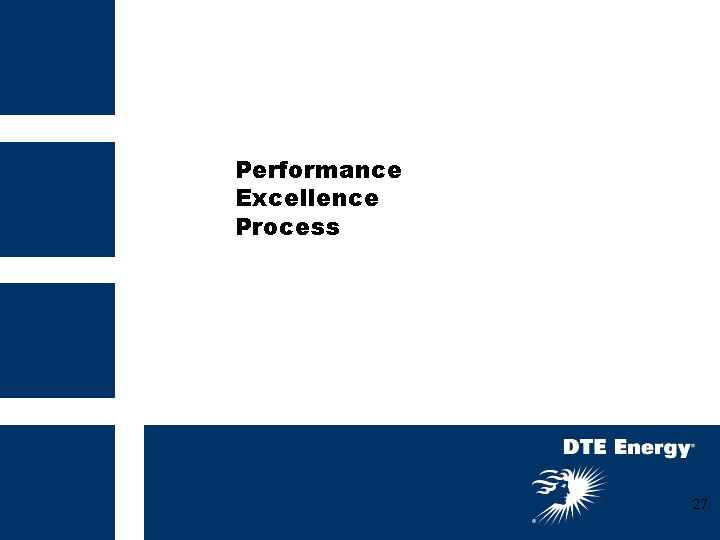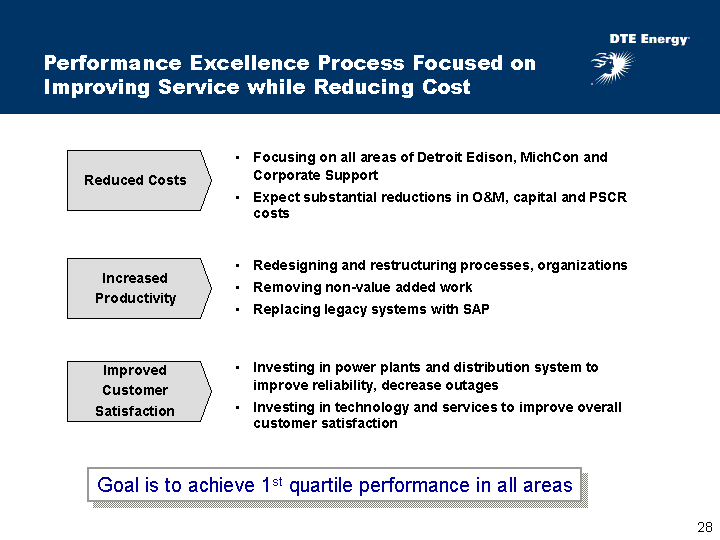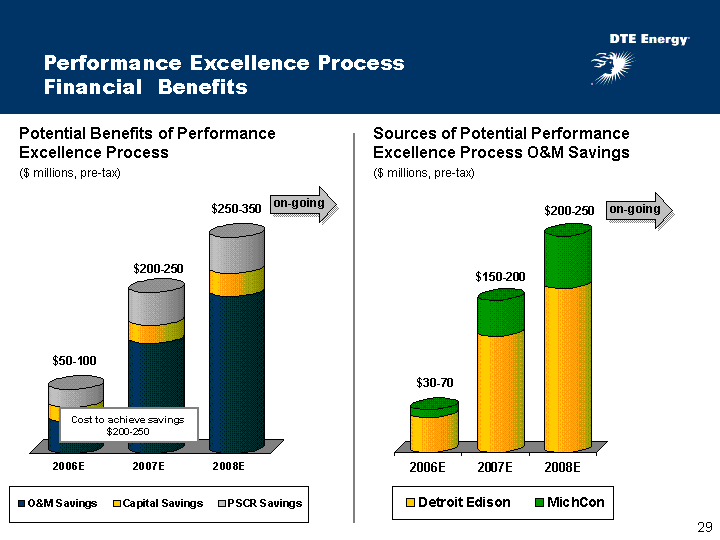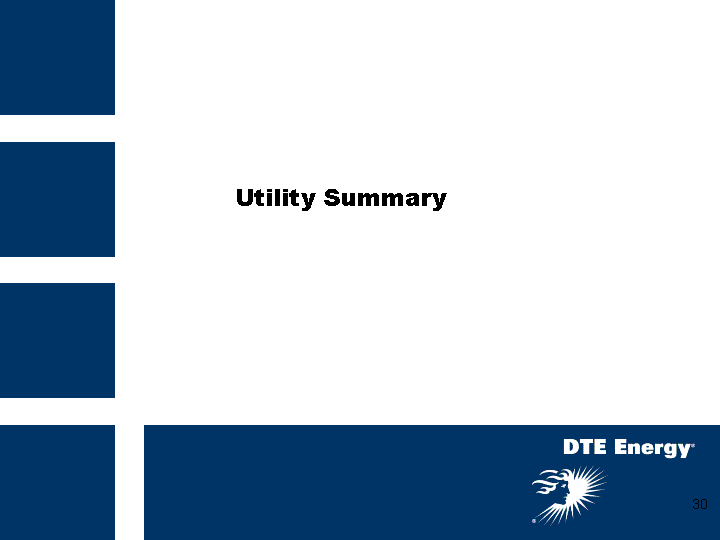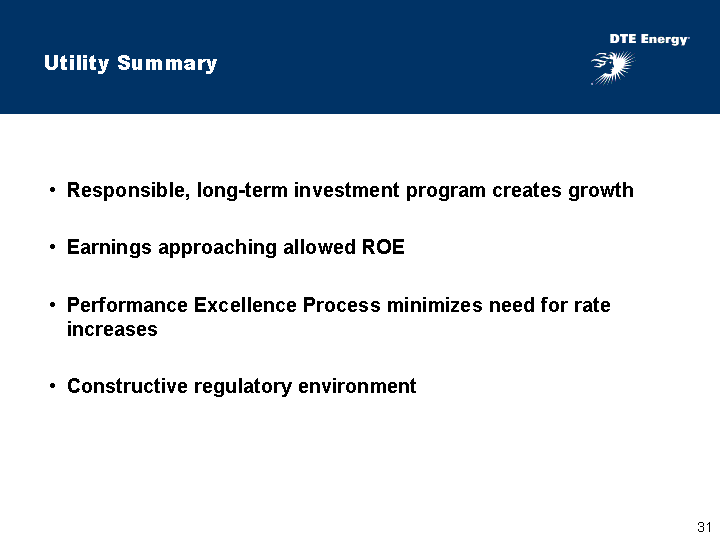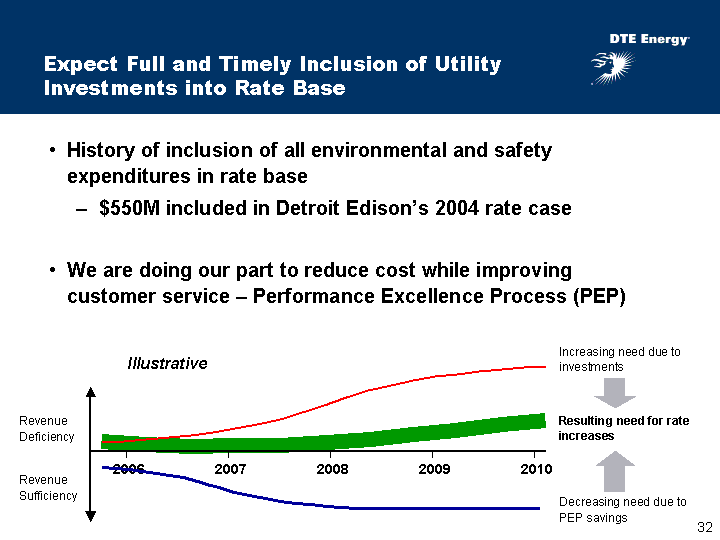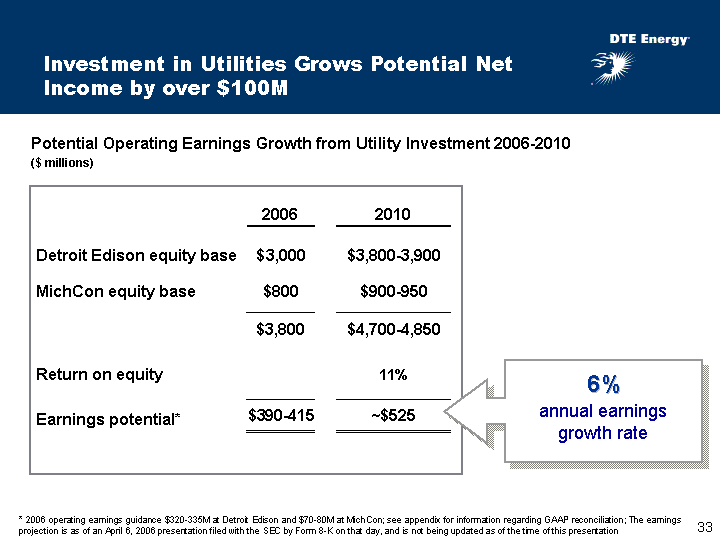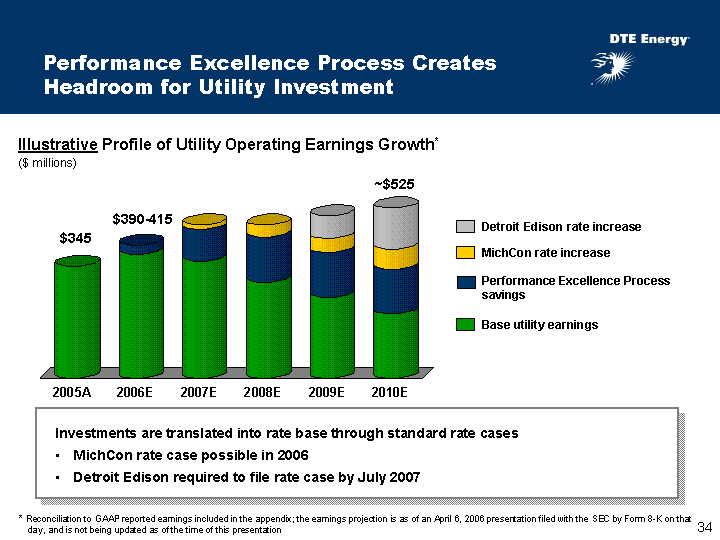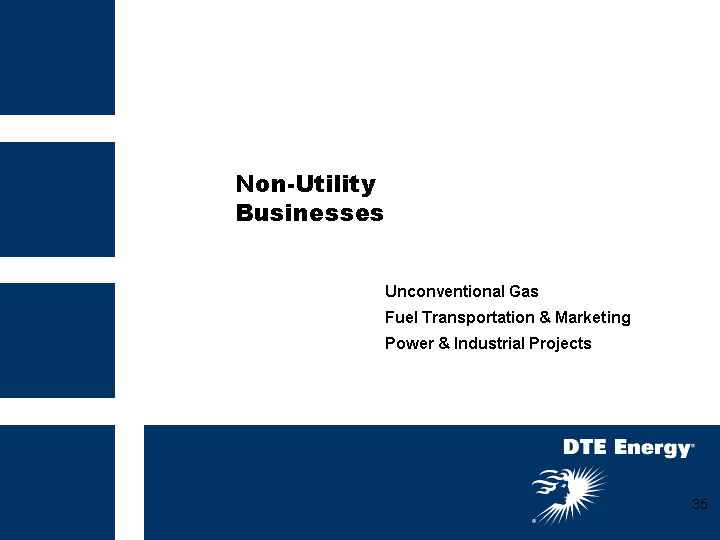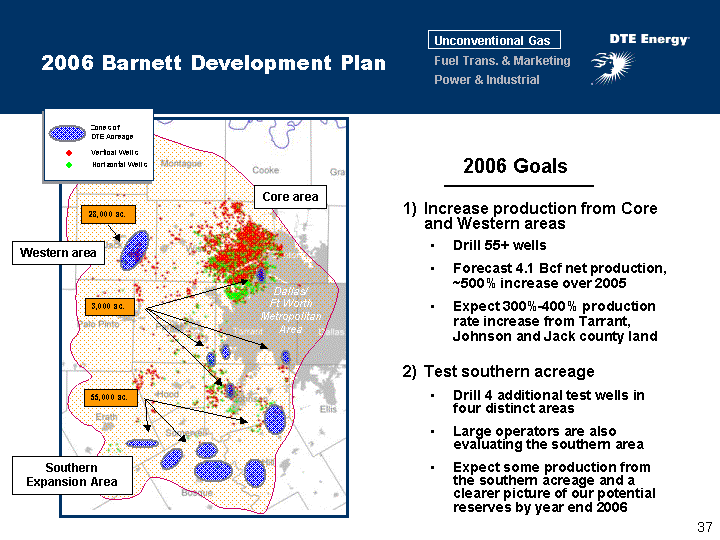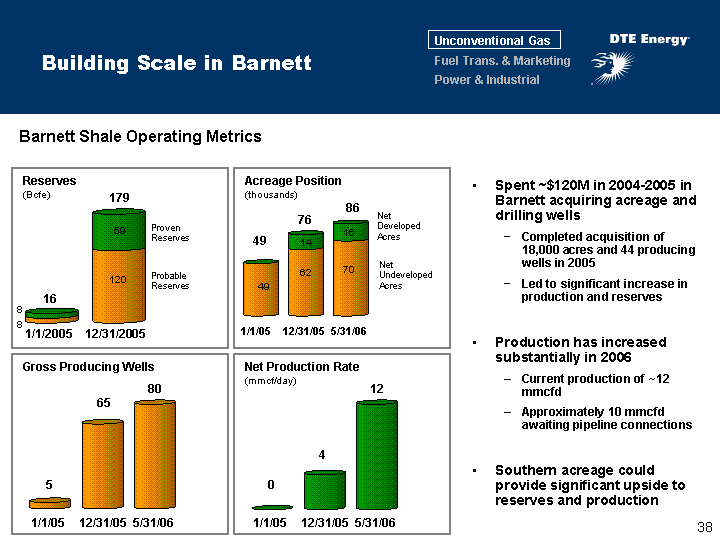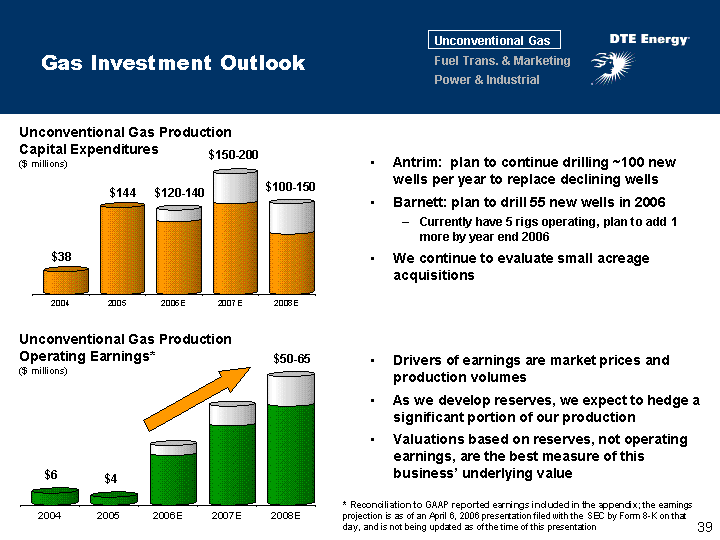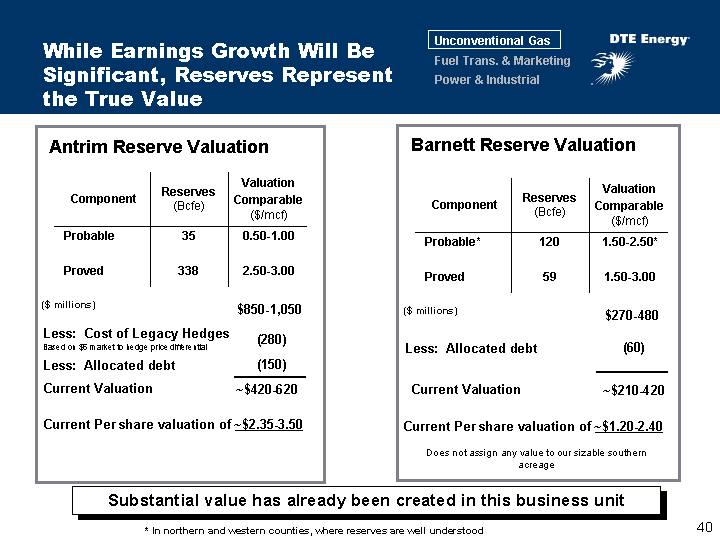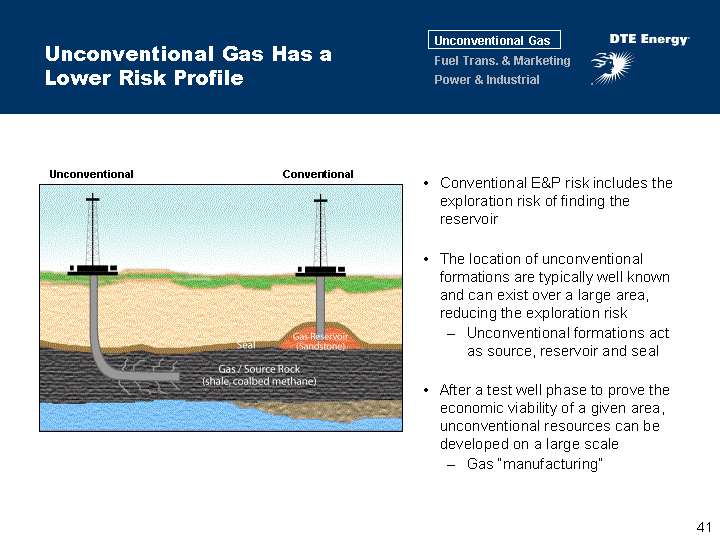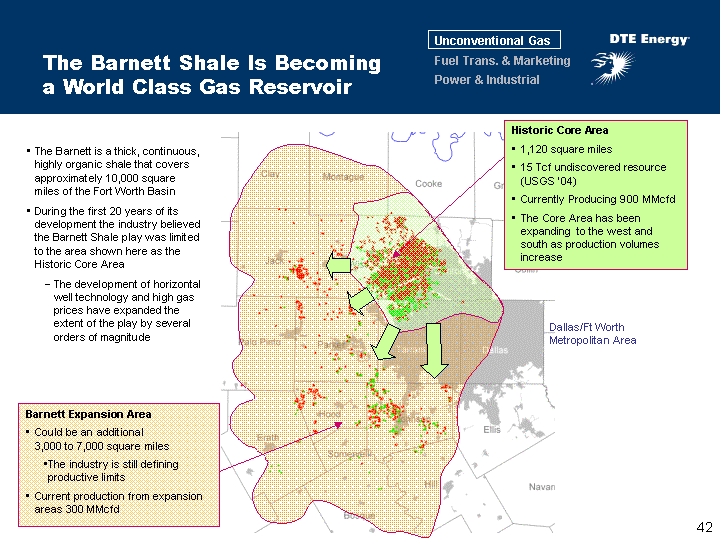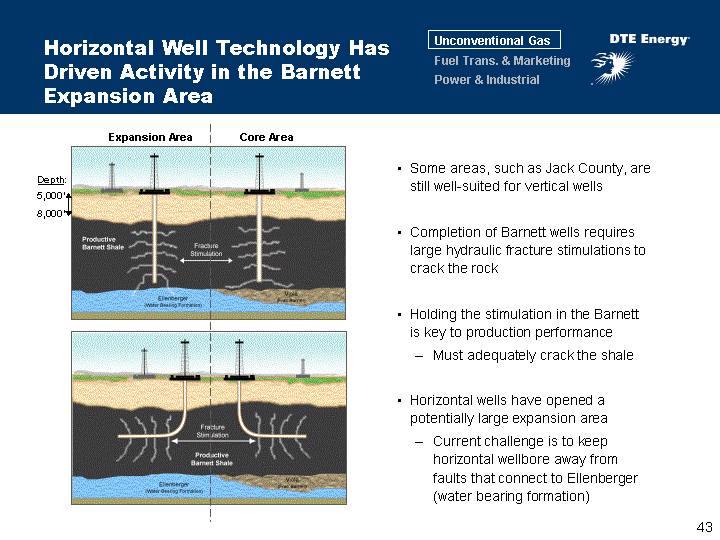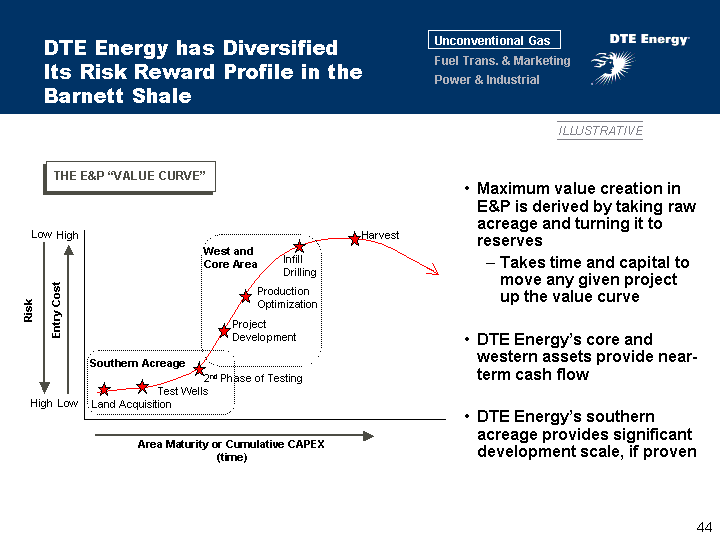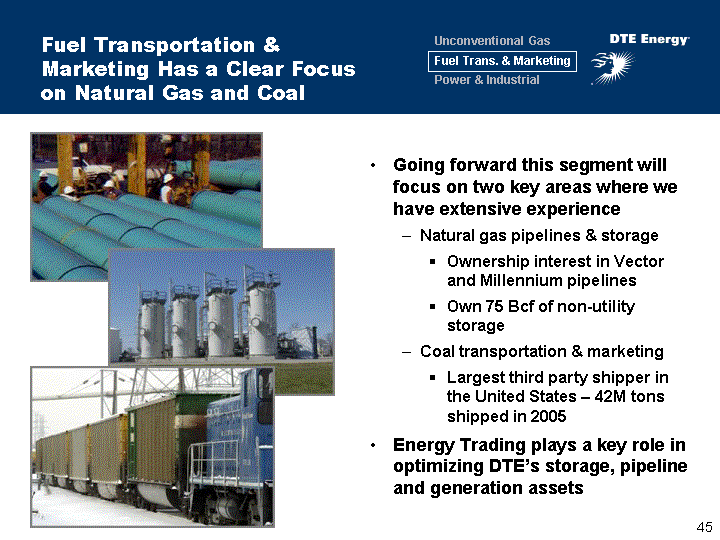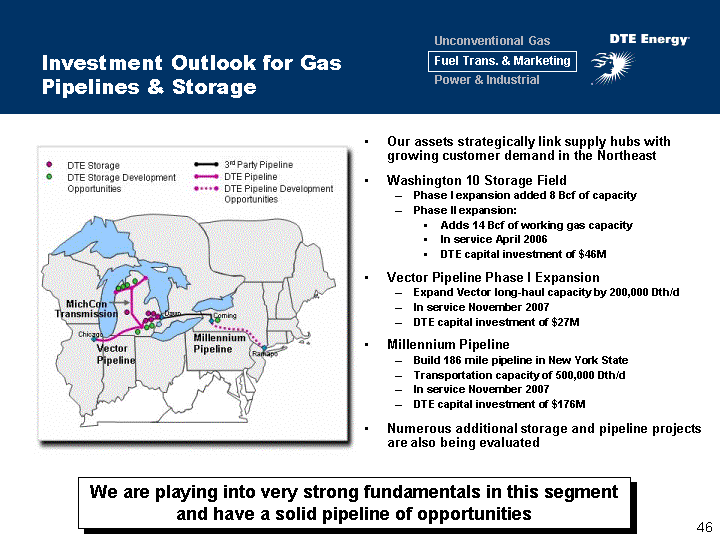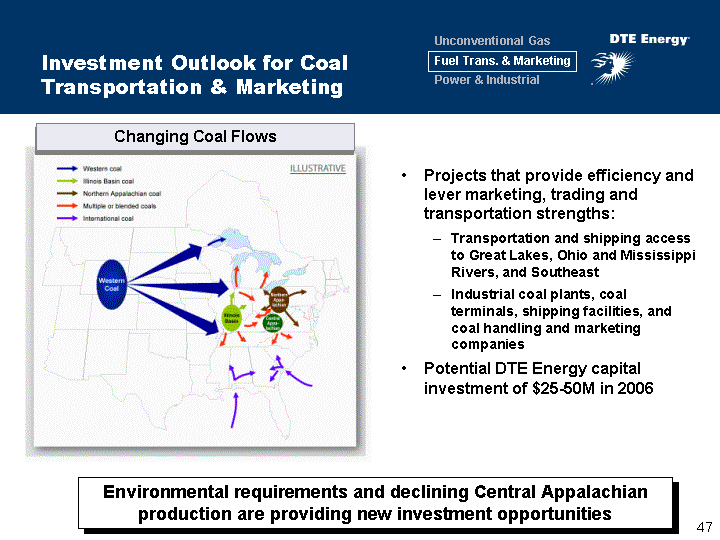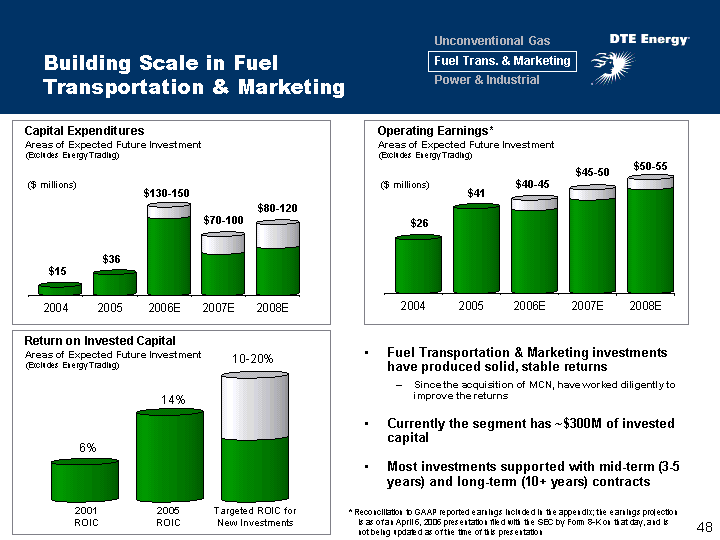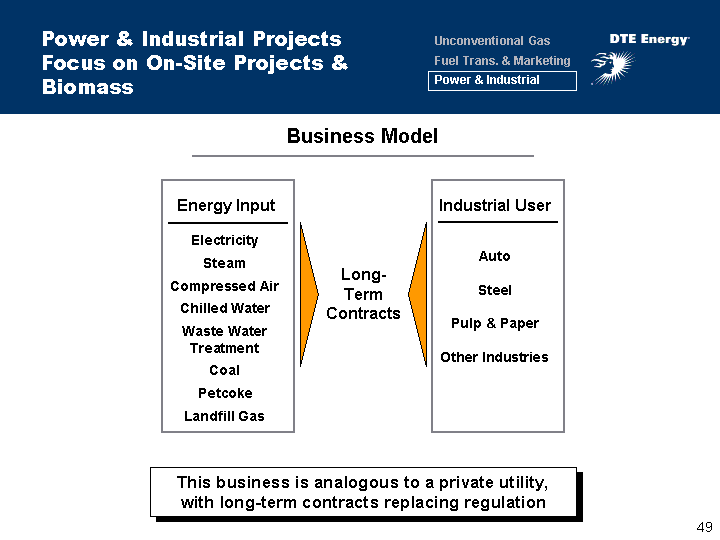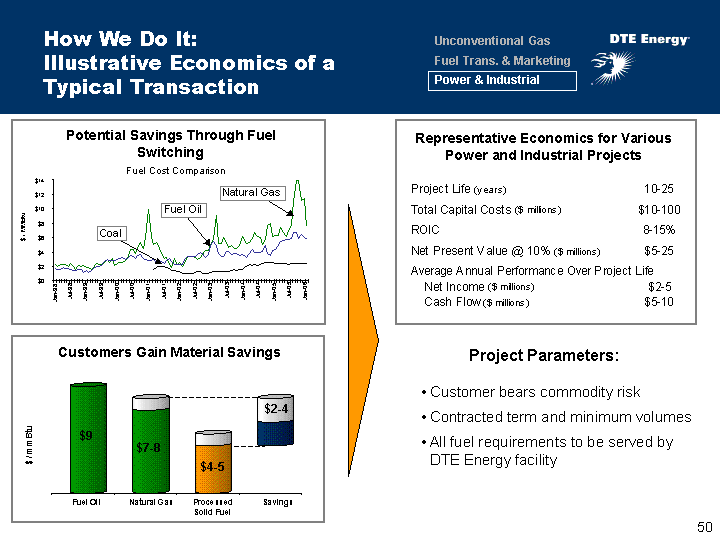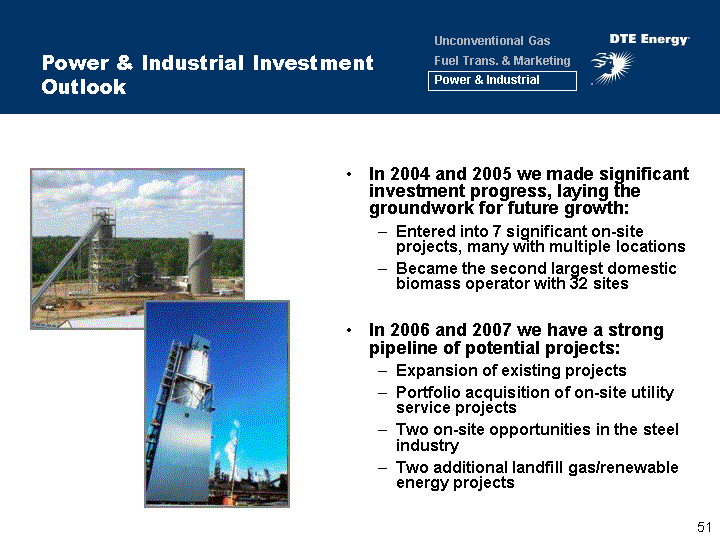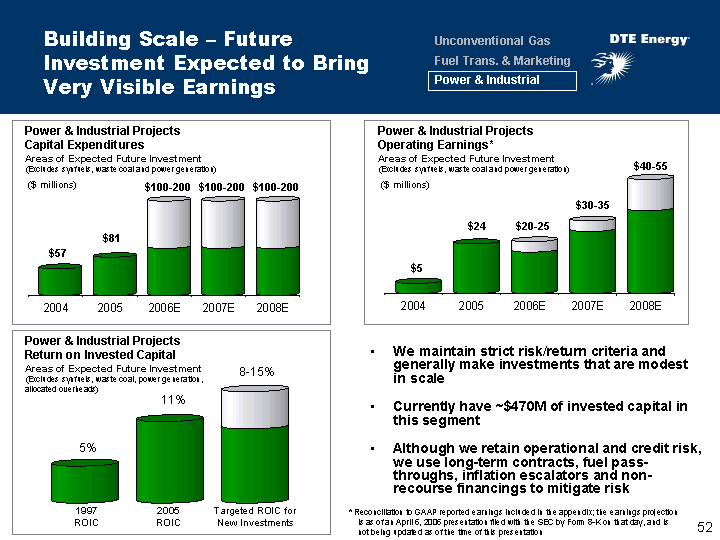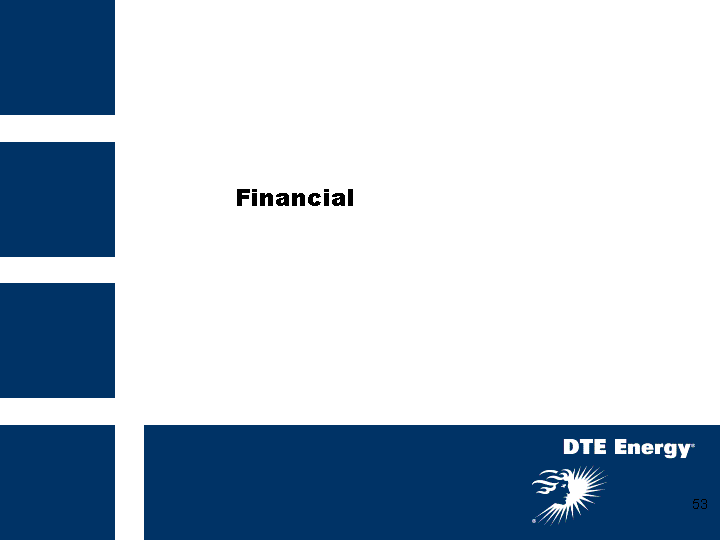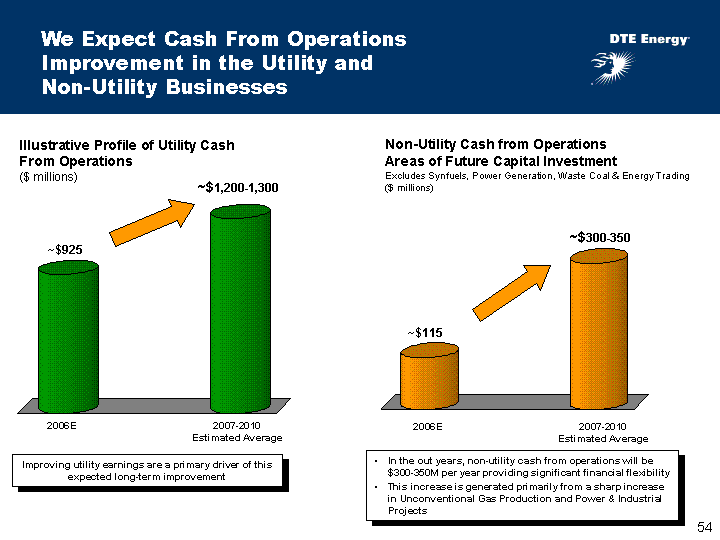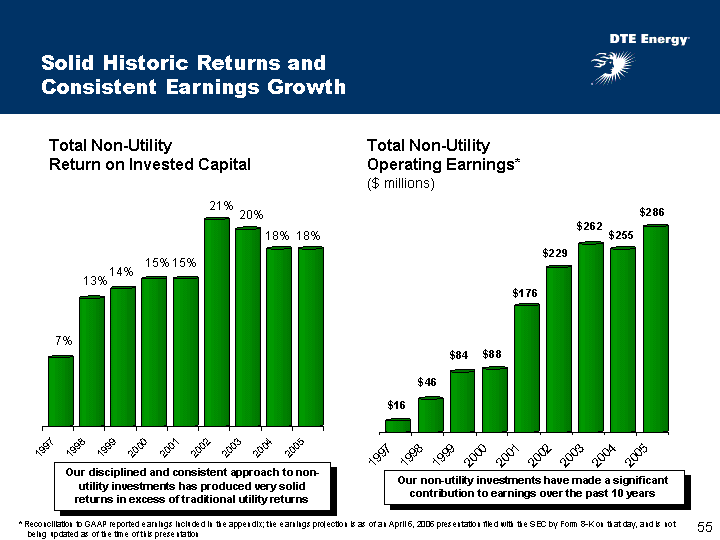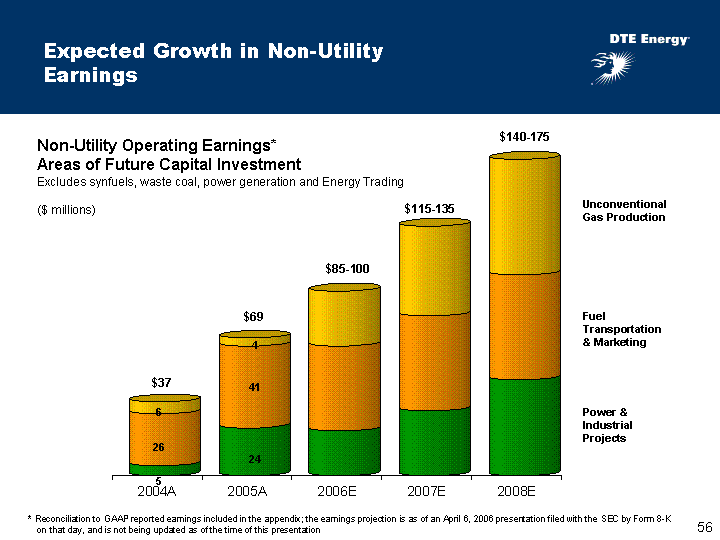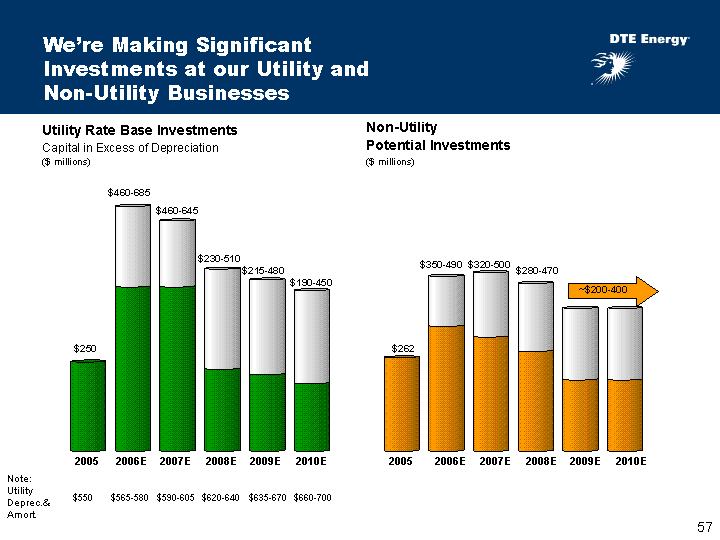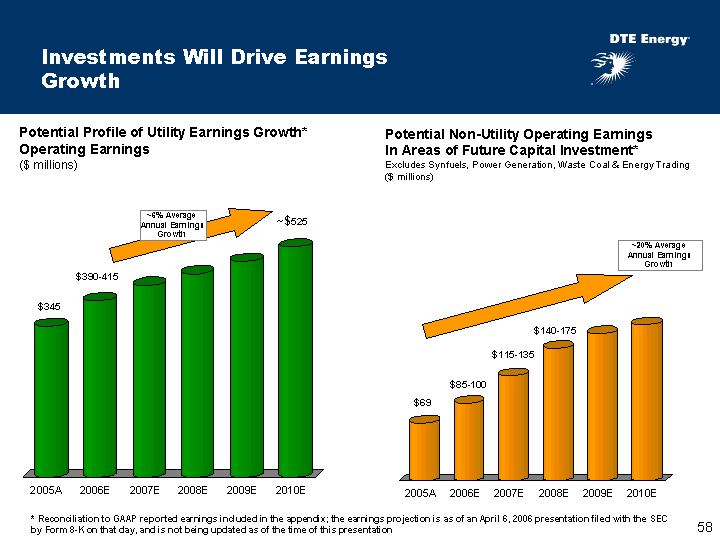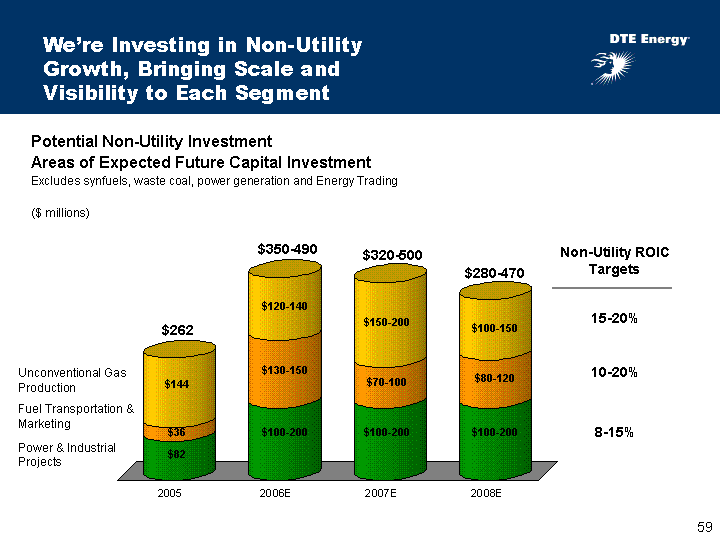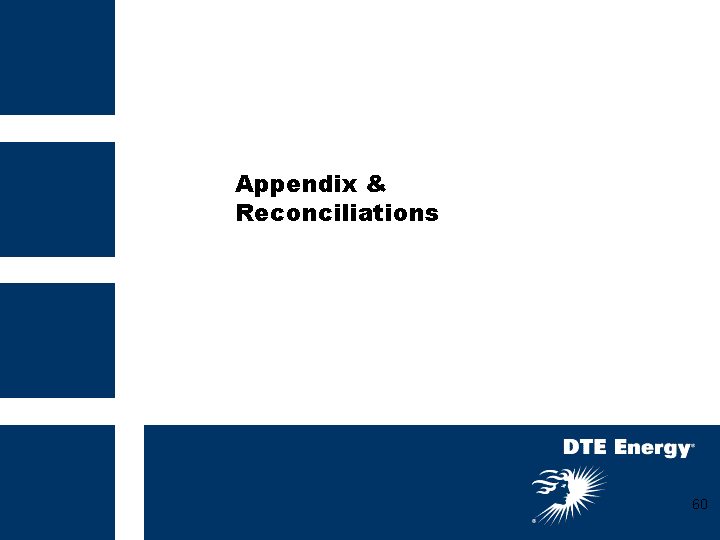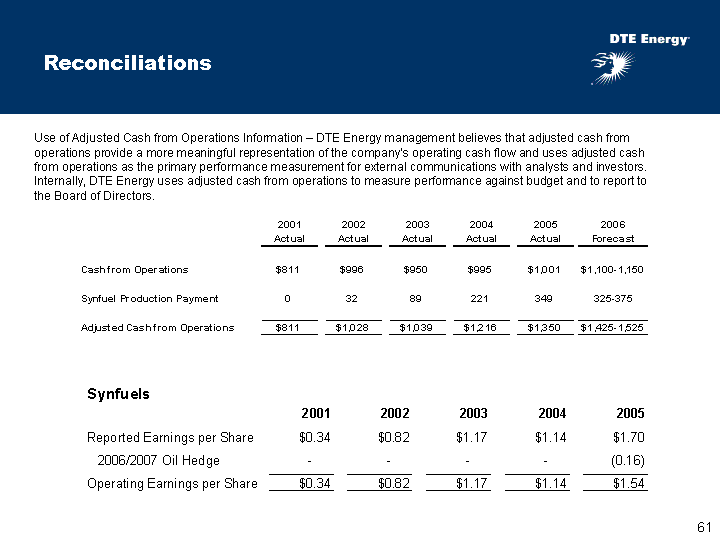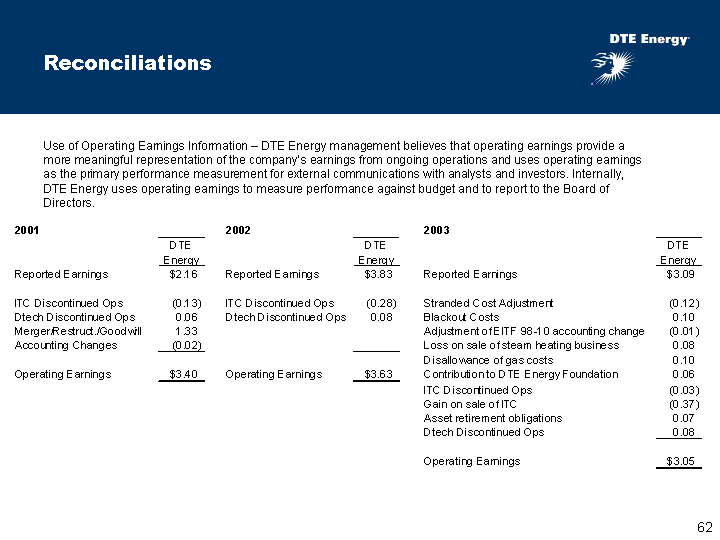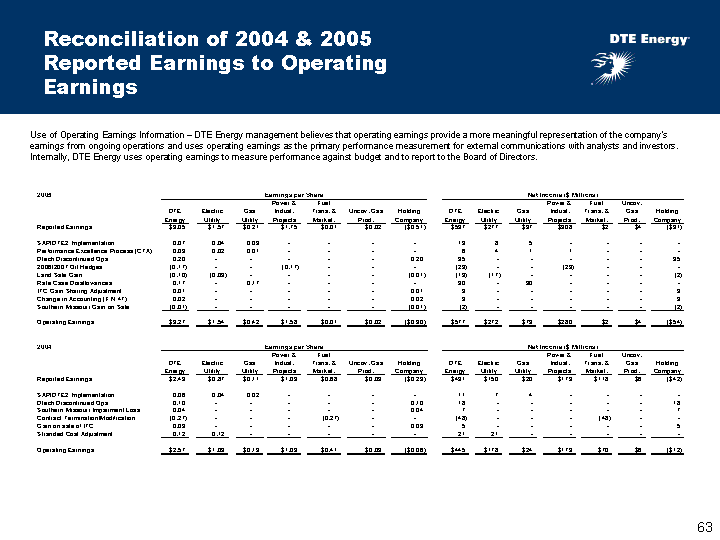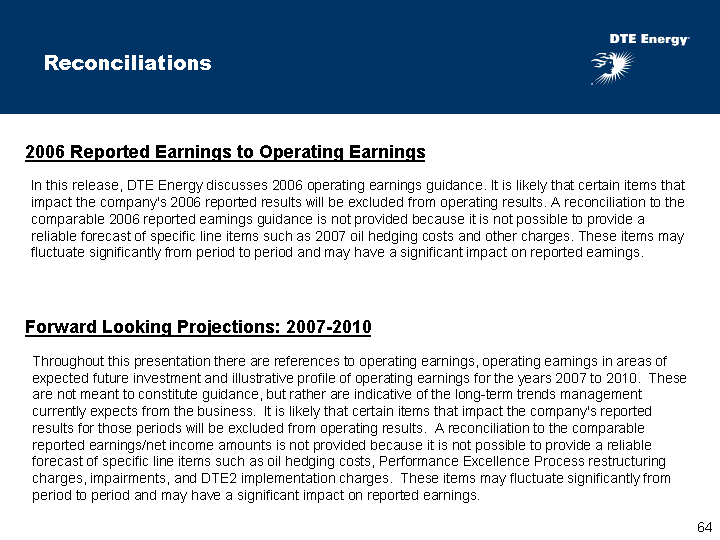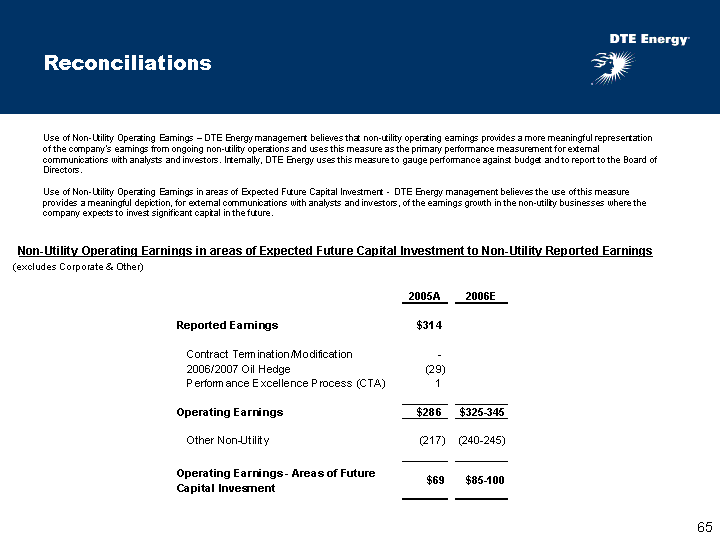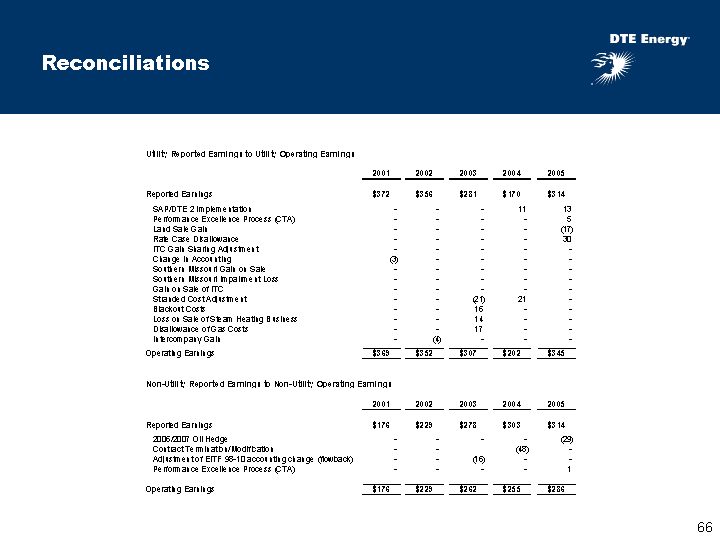| Safe Harbor Statement The information contained herein is as of the date of this presentation. DTE Energy expressly disclaims any current intention to update any forward-looking statements contained in this document as a result of new information or future events or developments. Words such as "anticipate," "believe," "expect," "projected" and "goals" signify forward-looking statements. Forward-looking statements are not guarantees of future results and conditions but rather are subject to various assumptions, risks and uncertainties. This presentation contains forward-looking statements about DTE Energy's financial results and estimates of future prospects, and actual results may differ materially. Factors that may impact forward-looking statements include, but are not limited to: the higher price of oil and its impact on the value of production tax credits, and the ability to utilize and/or sell interests in facilities producing such credits, or the potential requirement to refund proceeds received from synfuel partners; the uncertainties of successful exploration of gas shale resources and inability to estimate gas reserves with certainty; the effects of weather and other natural phenomena on operations and sales to customers, and purchases from suppliers; economic climate and population growth or decline in the geographic areas where we do business; environmental issues, laws and regulations, and the cost of remediation and compliance; nuclear regulations and operations associated with nuclear facilities; implementation of electric and gas Customer Choice programs; impact of electric and gas utility restructuring in Michigan, including legislative amendments; employee relations and the impact of collective bargaining agreements; unplanned outages; access to capital markets and capital market conditions and the results of other financing efforts which can be affected by credit agency ratings; the timing and extent of changes in interest rates; the level of borrowings; changes in the cost and availability of coal and other raw materials, purchased power and natural gas; effects of competition; impact of regulation by the FERC, MPSC, NRC and other applicable governmental proceedings and regulations; contributions to earnings by non-utility subsidiaries; changes in and application of federal, state and local tax laws and their interpretations, including the Internal Revenue Code, regulations, rulings, court proceedings and audits; the ability to recover costs through rate increases; the availability, cost, coverage and terms of insurance; the cost of protecting assets against, or damage due to terrorism; changes in and application of accounting standards and financial reporting regulations; changes in federal or state laws and their interpretation with respect to regulation, energy policy and other business issues; uncollectible accounts receivable; litigation and related appeals and changes in the economic and financial viability of our suppliers, customers and trading counterparties, and the continued ability of such parties to perform their obligations to the Company. This presentation should also be read in conjunction with the "Forward-Looking Statements" section in each of DTE Energy's, MichCon's and Detroit Edison's 2005 Form 10-K, and the 2006 quarterly report on Form 10-Q (which sections are incorporated herein by reference), and in conjunction with other SEC reports filed by DTE Energy, MichCon and Detroit Edison. Any projections of financial performance are as of an April 6, 2006 presentation filed with the SEC by Form 8-K on that day, and are not being updated as of the time of this presentation. Cautionary Note - The Securities and Exchange Commission permits oil and gas companies, in their filings with the SEC, to disclose only proved reserves that a company has demonstrated by actual production or conclusive formation tests to be economically and legally producible under existing economic and operating conditions. We use certain terms in this presentation such as "probable reserves" that the SEC's guidelines strictly prohibit us from including in filings with the SEC. You are urged to consider closely the disclosure in our Form 10-K and 10-Q, File No. 1-11607, available from our offices or from our website at www.dteenergy.com. You can also obtain this Form from the SEC by calling 1-800-SEC-0330. |
